Cross-docking has become a go-to solution for many businesses grappling with rising customer expectations, intense competition, and the urgent need to cut supply chain costs. This strategy helps businesses deliver products more quickly and efficiently.
While there are numerous supply chain management strategies available, cross-docking stands out, particularly for small and medium enterprises (SMEs), as a method to enhance efficiency and reduce operational costs.
A diverse array of companies, including e-commerce and brick-and-mortar retailers, manufacturers, and freight carriers, utilize cross-docking. In the following sections, you’ll learn what cross-docking is, how it operates, its various types, and how it can significantly benefit your business.
In this post, we will cover:
- Cross-docking boosts delivery speeds and supply chain efficiency by moving goods directly from incoming to outgoing transport, avoiding storage.
- This strategy reduces storage time by quickly transferring products between arriving and departing vehicles.
- Utilized across retail, e-commerce, manufacturing, and freight sectors, cross-docking meets diverse business needs.
- Key benefits of cross-docking include faster deliveries, reduced warehouse use, better inventory control, and lower transport and labor costs.
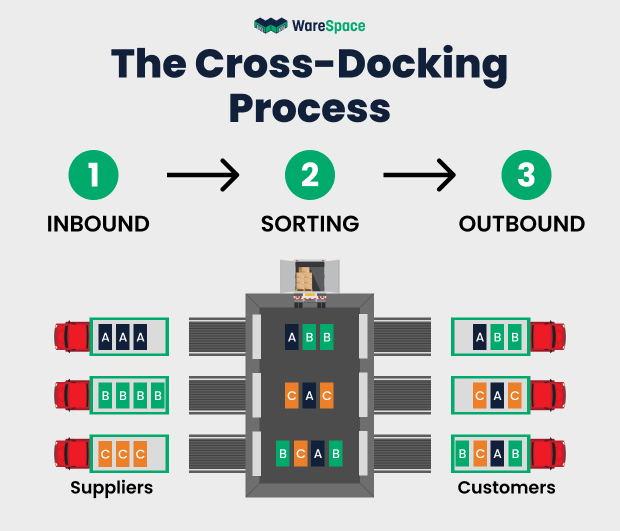
What Is Cross-Docking?
Cross-docking is a logistics strategy that streamlines the supply chain by enabling the direct transfer of products between incoming and outgoing transportation vehicles. This efficient method minimizes or altogether eliminates the need for warehousing, which traditionally slows down the distribution process. By bypassing this step, businesses can significantly speed up product delivery to customers.
This approach not only accelerates the supply chain but also reduces storage costs and minimizes the handling of goods. As products spend less time in transit and handling is decreased, the risk of product damage is significantly reduced. This makes cross-docking an especially valuable strategy for items that are high in demand or sensitive in nature, ensuring they reach their destinations quickly and in optimal condition.
Why Use Cross-Docking?
Cross-docking streamlines logistics by transferring products directly from incoming to outgoing vehicles, significantly enhancing efficiency and speed. This method reduces costs and accelerates delivery times, making it ideal for scenarios that demand quick turnover. Key benefits include:
- Reduced Storage Costs
- Increased Accuracy
- Faster Delivery Times
- Decreased Product Handling
- Increased Sustainability
Cross-docking proves particularly effective for perishable items, high-demand products, and urgent supplies, where timely and efficient handling is crucial. By integrating cross-docking, businesses can optimize their supply chains, responding swiftly to market demands while cutting down on costs.
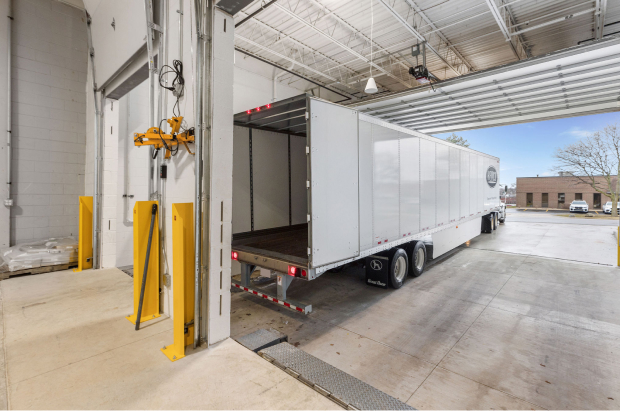
Types of Cross-Docking
Cross-docking can be segmented into several types, each designed to meet specific operational needs within the supply chain. Understanding these variations can help businesses choose the most effective strategy to enhance their logistical efficiency. Below, we explore the main types of cross-docking and their unique applications:
Pre-distribution Cross-Docking
Pre-distribution cross-docking involves sorting goods according to their final destinations as soon as they arrive. These items are then immediately loaded onto outbound trucks without ever being stored in the warehouse.
Here’s how it works:
- Direct Transfer: Goods are unloaded from incoming transport, sorted, and loaded onto outbound transport without interim storage.
- Efficiency for Pre-allocated Goods: Ideal for products pre-assigned to destinations, reducing handling and speeding up distribution.
- Use Case: Especially effective for products with predictable demand and distribution schedules, like retail store replenishments.
Post-distribution Cross-Docking
Post-distribution cross-docking allows goods to be stored temporarily at the docking facility until their delivery schedules are fully determined, after which they are quickly dispatched.
Key operational details:
- Brief Storage: Goods are stored temporarily until delivery schedules are confirmed.
- Strategic Consolidation: Suitable for products that require grouping or timing adjustments before final shipment.
- Use Case: Useful for managing products with variable demand or coordinating large-scale distributions.
Continuous Cross-Docking
Continuous cross-docking is characterized by a rapid movement of goods from the inbound truck directly to the outbound truck, with minimal or no dwell time in between.
Process overview:
- Non-stop Flow: Ensures continuous movement of goods through the docking terminal.
- High Turnover Compatibility: Best for items in constant demand, like daily consumer goods.
- Use Case: Optimal for industries dealing with perishable goods or just-in-time supply requirements.
Consolidation Cross-Docking
Consolidation cross-docking involves receiving shipments from multiple sources and combining them into larger, more economical loads for outbound transport.
Operational benefits:
- Merge Shipments: Combines several smaller incoming shipments into one larger outbound load.
- Cost Efficiency: Reduces transportation costs by optimizing load capacity.
- Use Case: Common in logistical setups that aggregate orders from various suppliers before making a combined delivery.
Additional variations
Cross-docking includes specialized methods that cater to unique operational needs, enhancing flexibility and efficiency within supply chains. Here are some notable variations:
Deconsolidation
This method involves breaking down large shipments into smaller, destination-specific lots.
- Targeted Distribution: Facilitates precise delivery by separating bulk shipments into customized orders.
- Use Case: Particularly effective for distribution centers that serve multiple retail locations with different product requirements.
Flexibility and Customization
These practices allow businesses to adapt logistics strategies to meet diverse delivery destinations and requirements.
- Adaptive Logistics: Enables modifications in the shipping process to accommodate specific customer or market demands.
- Use Case: Useful for companies that manage a wide range of products and need to respond dynamically to market changes.
Each type of cross-docking offers distinct advantages and is chosen based on the specific logistical needs and goals of a business. Understanding these variations is crucial for optimizing a company’s supply chain management, ensuring that products are moved efficiently and meet the demands of a fast-paced market.
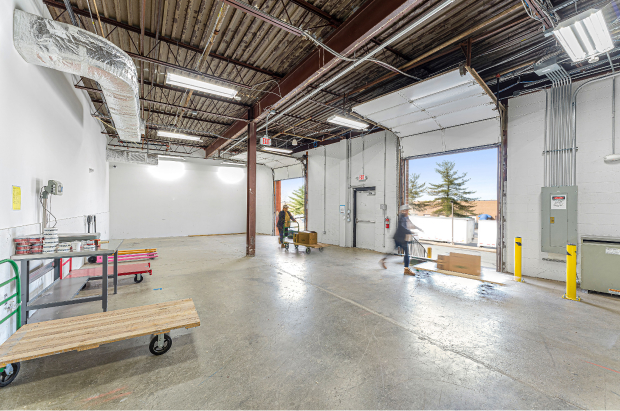
Industries that Use Cross-Docking
Cross-docking is a strategic choice in various industries, particularly where speed and efficiency in logistics are paramount. Here are some specific industries and situations where cross-docking proves beneficial:
- Retail: Ensures that the latest products are quickly available on shelves, crucial for maintaining customer satisfaction and high turnover.
- Manufacturing: Supports just-in-time production models by facilitating the timely arrival of components, reducing inventory costs and enhancing production efficiency.
- Automotive: Essential for distributing parts and accessories rapidly to meet tight production schedules and maintenance demands.
- E-commerce: Helps manage large volumes of orders efficiently, crucial for businesses that need to deliver products directly to consumers quickly.
- Healthcare: Critical for the quick distribution of medical supplies and pharmaceuticals, where delivery speed can directly impact patient care.
- Food and Beverage: Ideal for managing perishable goods, ensuring they remain fresh by minimizing the time between supply chain stages.
Cross-docking is particularly useful in scenarios that demand:
- High-turnover Products: For items like perishable groceries or trending consumer electronics that must reach consumers swiftly.
- Seasonal Demand: Useful during peak shopping seasons when products must reach the market quickly to meet consumer demand.
- Emergency Supplies: Necessary for rapid distribution of critical supplies in disaster relief or urgent medical situations.
By understanding these applications and the specific needs they address, businesses can more effectively integrate cross-docking into their logistics strategies.
Implementing Cross-Docking in Your Business
Successfully implementing cross-docking in your business involves several key infrastructural and technological considerations:
- Warehouse Design: Facilities must be designed to enable efficient and rapid transfer of goods from inbound to outbound transportation, often involving specific layouts that minimize handling time.
- Technology Utilization: Implementing advanced systems such as Warehouse Management Systems (WMS) and Electronic Data Interchange (EDI) is crucial. These technologies help streamline operations, improve accuracy, and enhance communication across the supply chain.
- Training and Processes: Employees must be trained in the specific processes of cross-docking. Understanding the flow of goods and the technology that supports it is essential for maintaining efficiency.
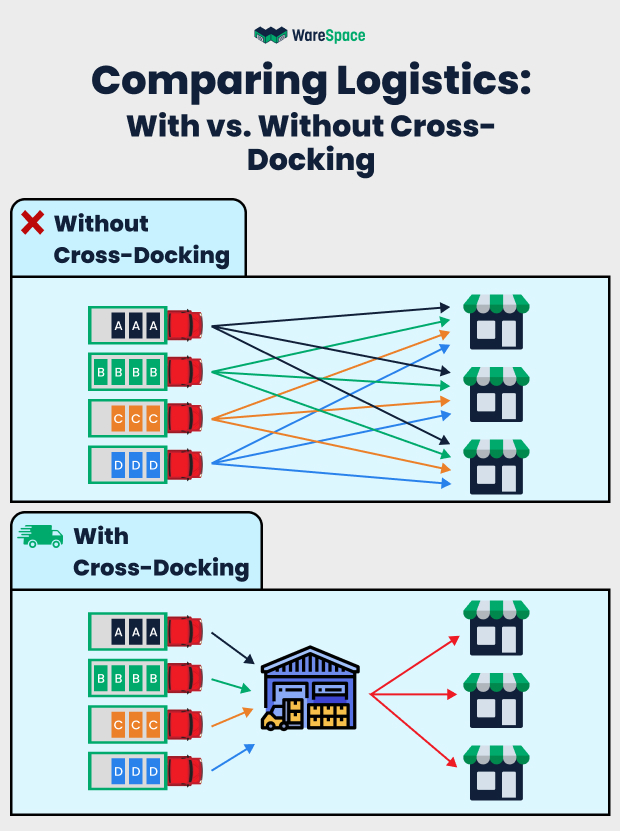
Advantages and Disadvantages of Cross-Docking
Cross-docking can offer substantial benefits to companies by enhancing efficiency and reducing costs, but its successful implementation depends heavily on the ability to manage the inherent complexities and upfront investments.
Advantages of Cross-Docking
Cross-docking provides several key benefits that make it an attractive option for many businesses looking to streamline their logistics:
- Increased Efficiency: By moving goods directly from incoming to outgoing trucks without storage, cross-docking reduces the time products spend in the supply chain, leading to faster overall delivery times.
- Reduced Costs: Eliminating the need for warehouse storage not only reduces the costs associated with storing goods, but also lowers labor costs as fewer workers are needed for order picking and inventory management.
- Decreased Inventory: Cross-docking minimizes the amount of inventory that a company must hold at any one time, reducing inventory holding costs and the risk of inventory depreciation or obsolescence.
- Enhanced Product Quality: Since goods are handled less frequently, there is a reduced risk of damage, maintaining higher product quality and customer satisfaction.
- Environmental Benefits: Fewer storage requirements mean less energy consumption and a smaller carbon footprint, contributing to more sustainable operations.
Disadvantages of Cross-Docking
Despite its advantages, cross-docking also presents several challenges that require careful consideration:
- Complex Coordination: Effective cross-docking requires a high level of coordination between suppliers, transportation networks, and docking facilities to ensure that goods are received, sorted, and shipped in a timely manner.
- High Initial Setup Costs: Establishing a cross-docking system can be expensive. It often involves significant investments in facility redesign, technology such as WMS and TMS, and training for personnel.
- Limited Product Suitability: Not all products are suitable for cross-docking. Products that need quality inspections, have a high variability in demand, or are not delivered on predictable schedules may not benefit from cross-docking.
- Dependence on Reliable Suppliers and Carriers: Since cross-docking relies heavily on timing, any delays in the supply chain can disrupt the entire operation, requiring dependable partners and robust contingency planning.
- Demand for Advanced Technology: To manage the complexity and keep operations running smoothly, cross-docking depends on advanced technologies for tracking and managing logistics, which may represent a barrier for smaller or less technologically advanced companies.
Understanding both the advantages and the disadvantages is crucial for any business considering this logistics strategy.
How SMEs can Utalize Cross-Docking
For businesses looking to expedite product delivery and streamline operations, cross-docking presents a compelling strategy. Especially for small and medium enterprises (SMEs), this method offers significant benefits by optimizing the flow of goods and minimizing associated costs. One significant challenge for SMEs is the substantial upfront investment required for infrastructure and technology.
WareSpace offers an innovative solution that allows SMEs to bypass these initial costs. By providing the opportunity to rent smaller, equipped warehouse spaces, including amenities like loading docks, WareSpace enables SMEs to access cross-docking facilities without the heavy financial burden. This arrangement allows businesses to maintain flexibility, scale operations according to current needs, and manage costs more effectively.
If you are interested in exploring how renting a small warehouse space can benefit your business, contact us today! Our team is ready to help you streamline your operations and implement cross-docking effectively.
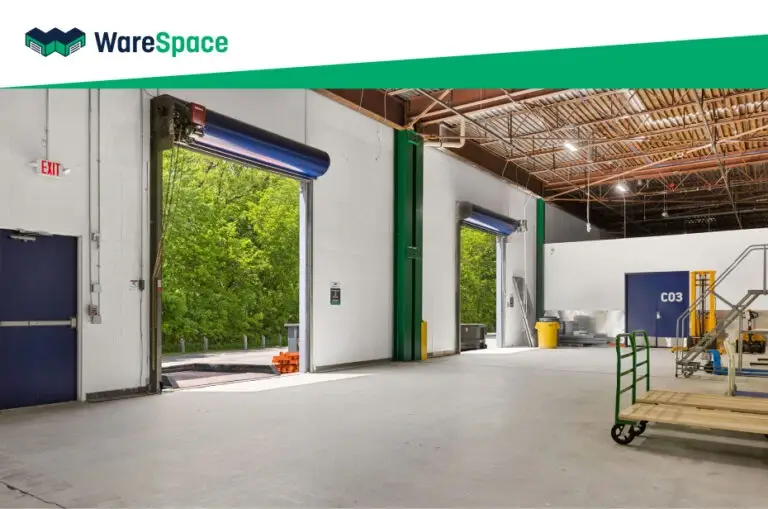
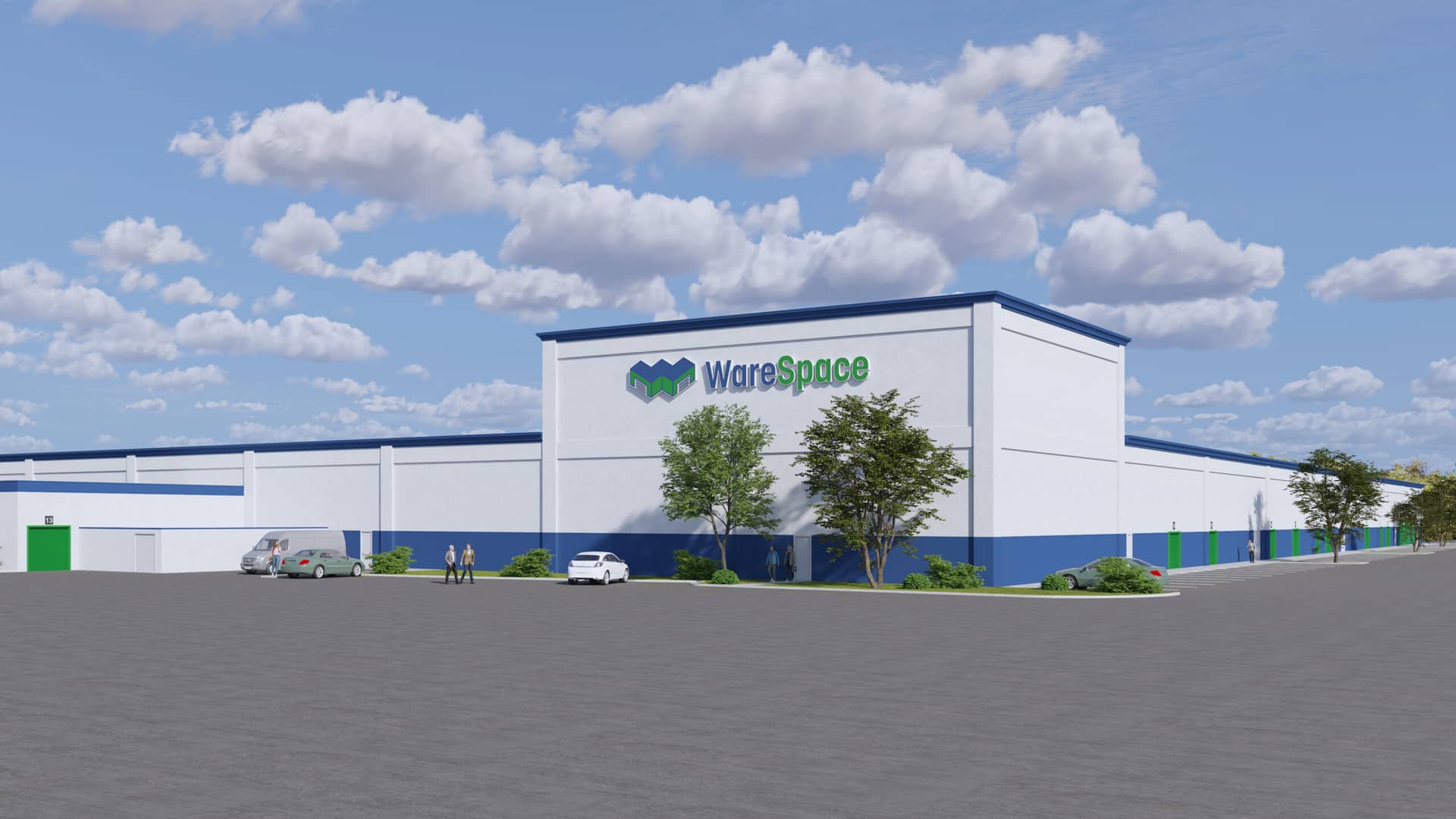
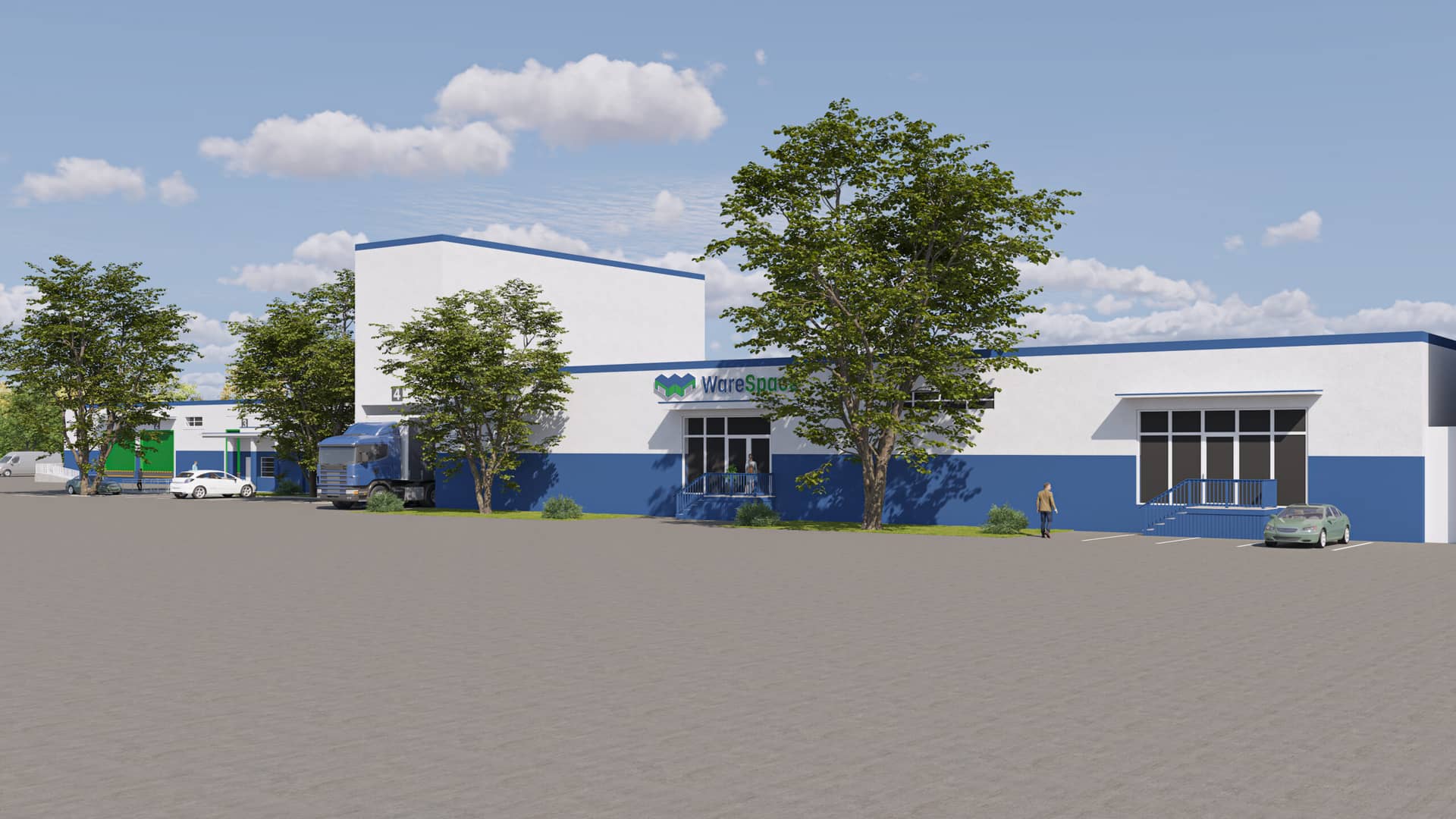

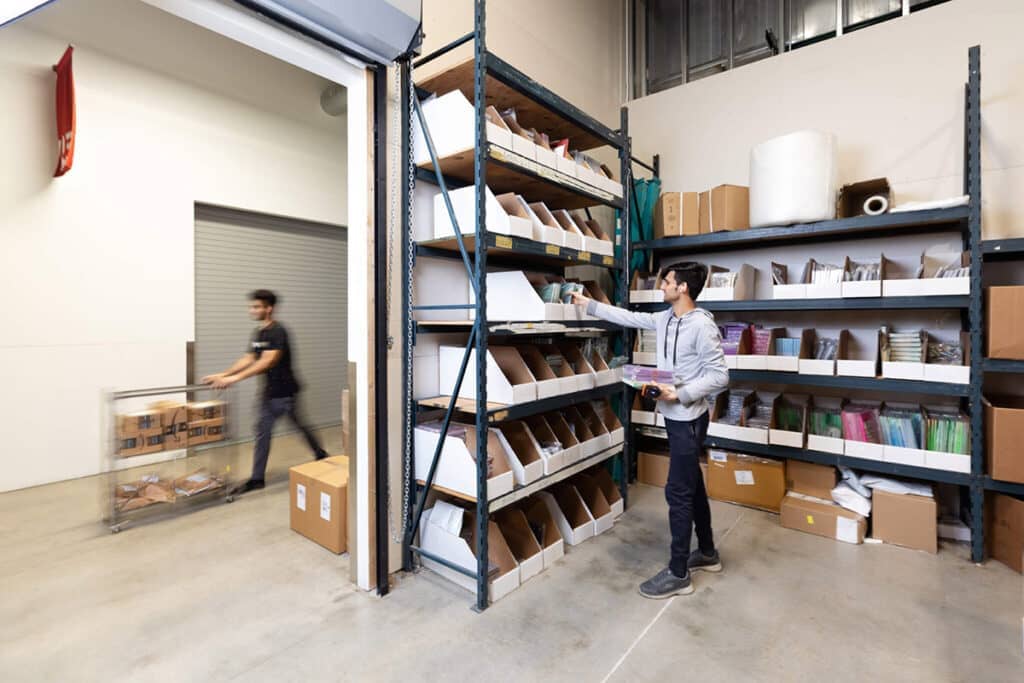
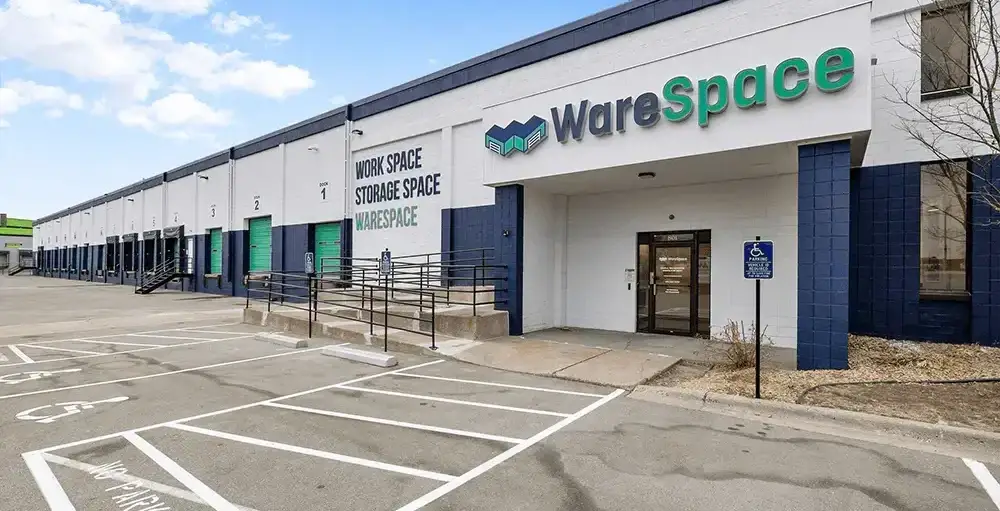
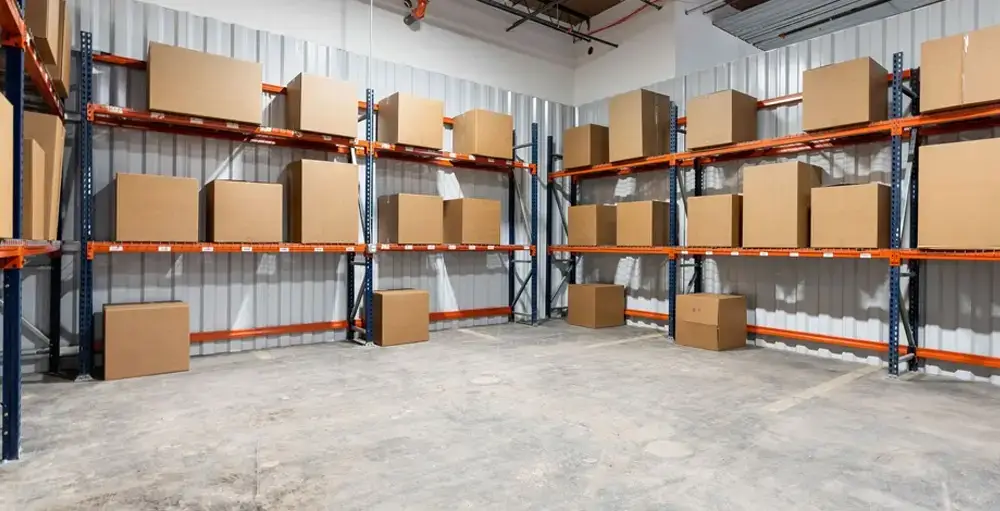
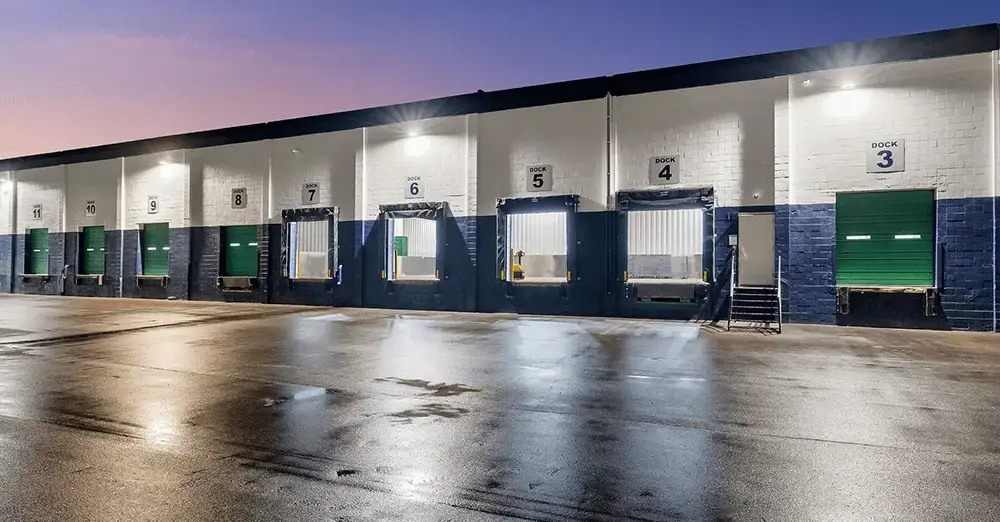
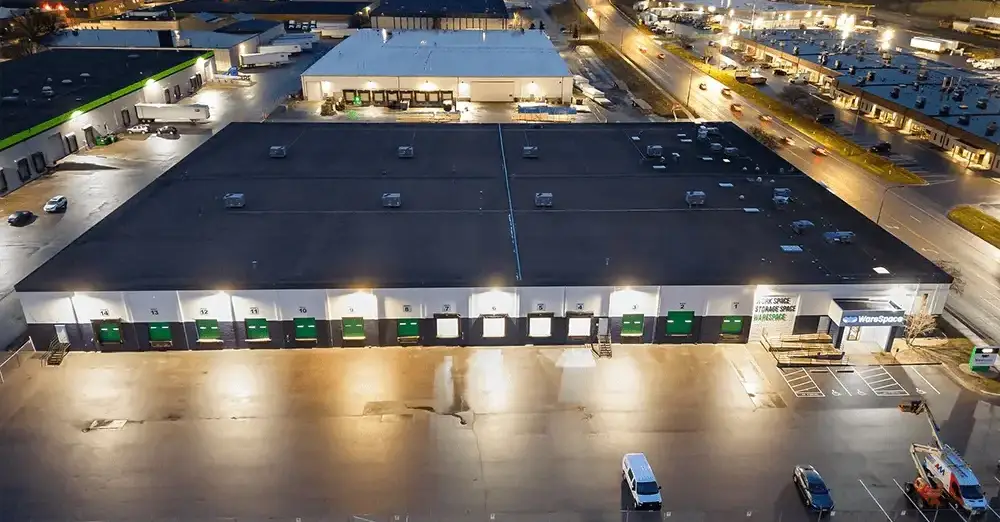











 ►
Explore 3D Space
►
Explore 3D Space